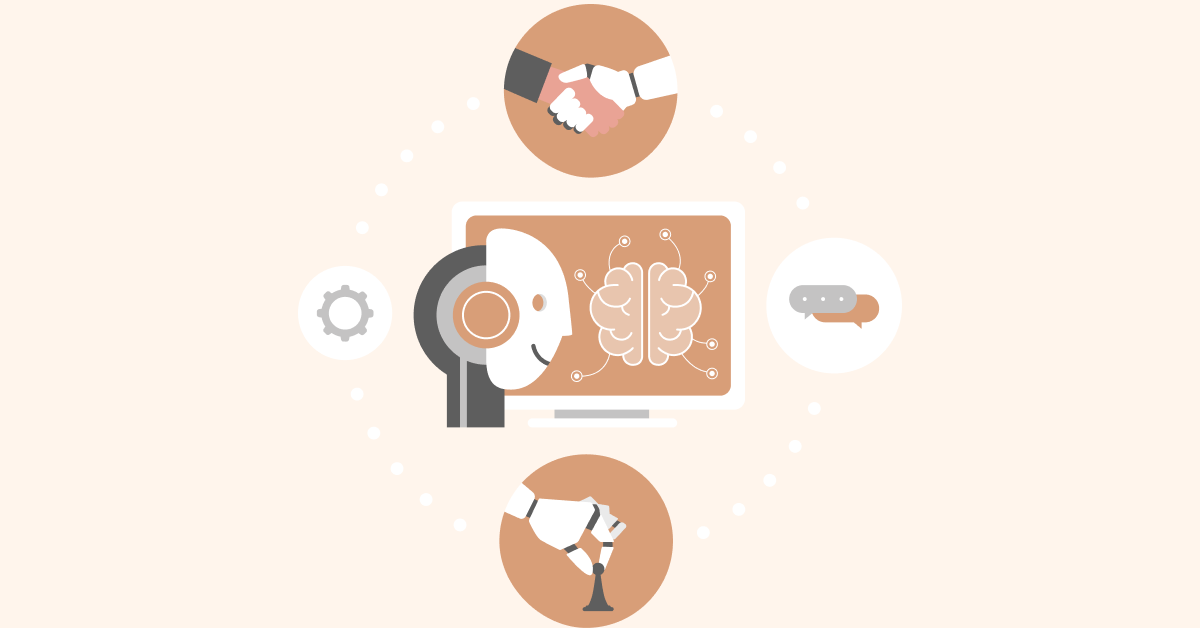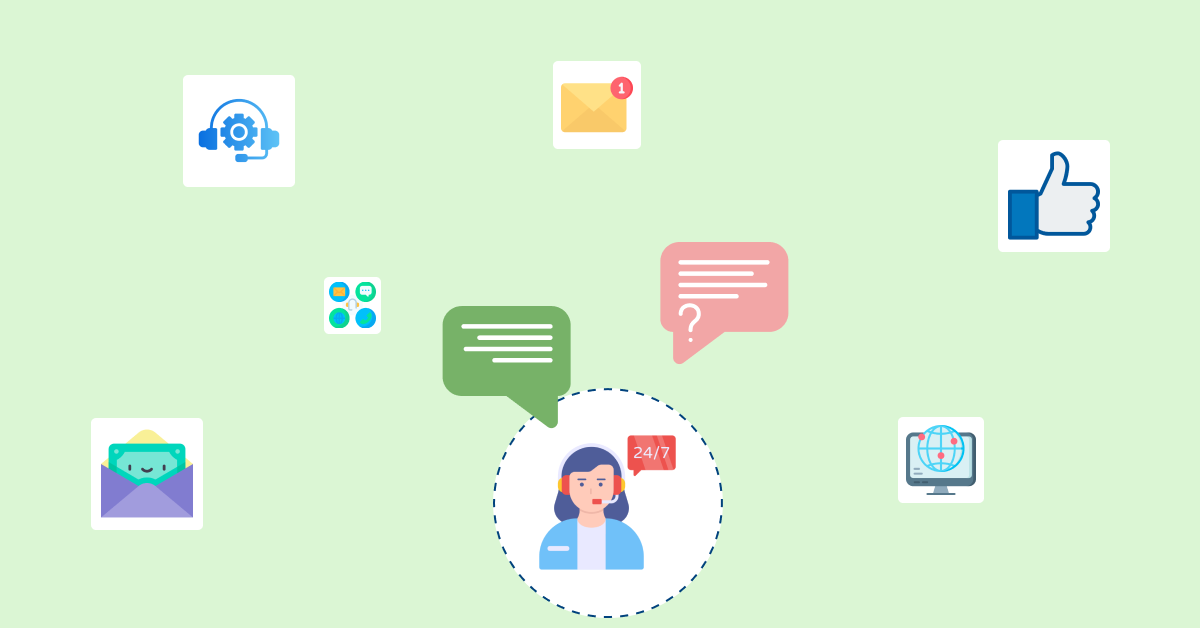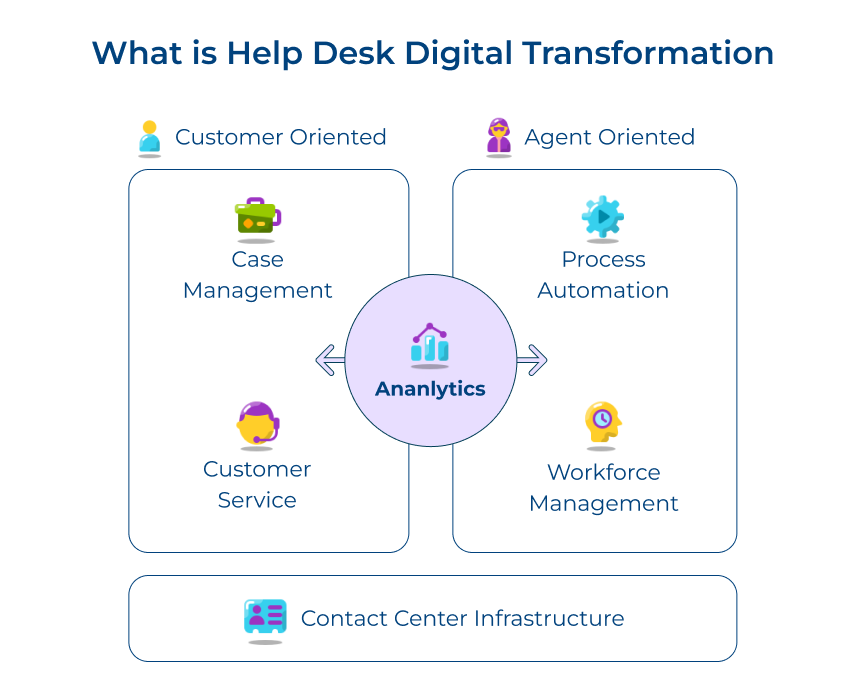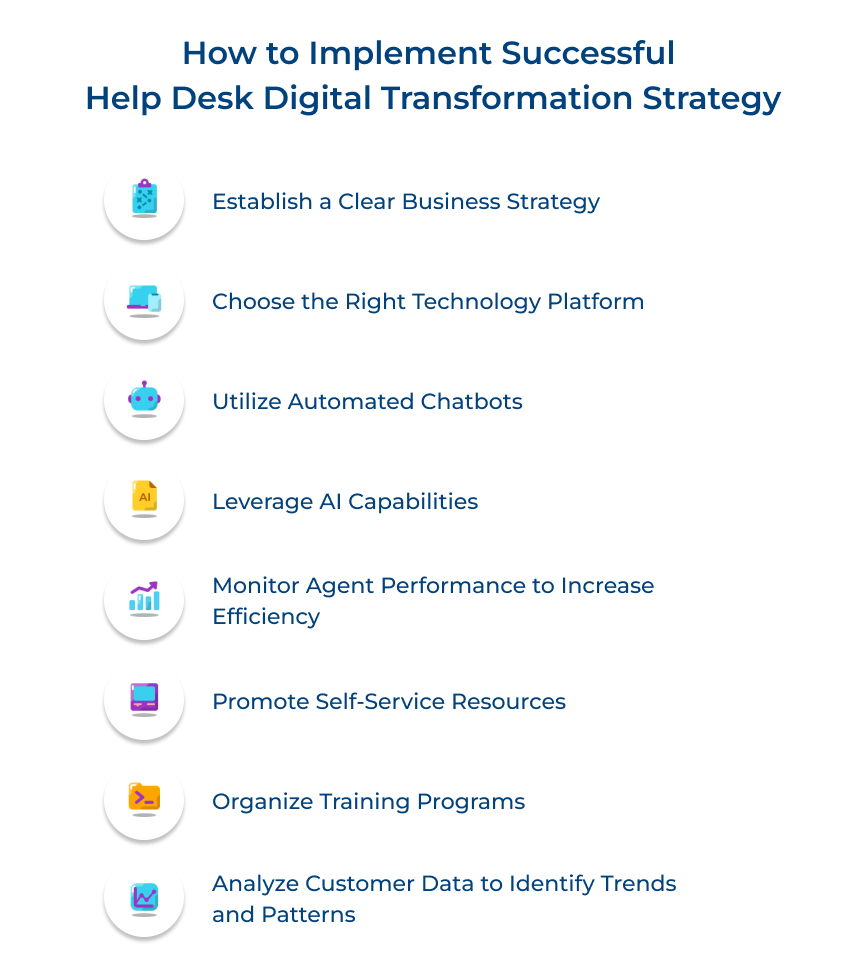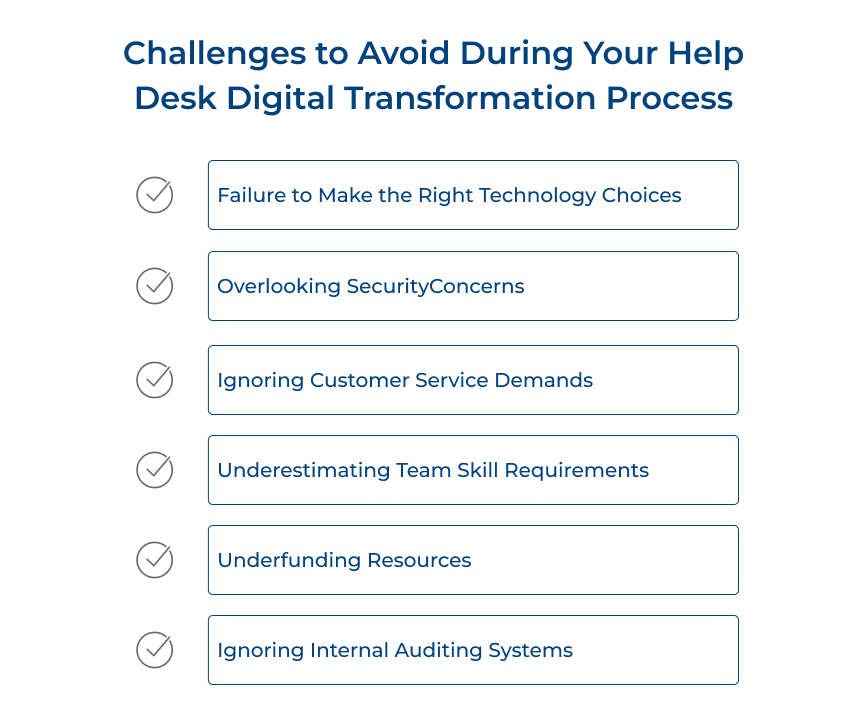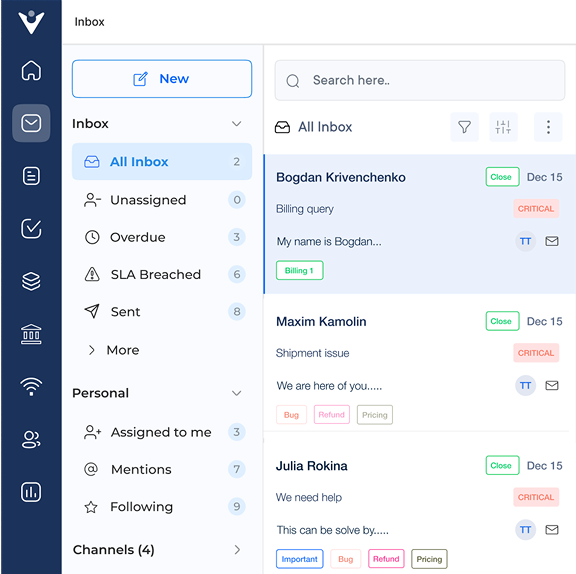1. Embrace Customer-Centricity
Placing the customer at the heart of your help desk’s digital transformation is crucial for delivering exceptional support. Understanding their needs, preferences, and pain points will enable you to optimize your help desk to provide a seamless experience. The customer-centric companies are 60% more profitable compared to other companies.
Let us take the example of a software company implementing a help desk digital transformation strategy. They conducted customer surveys and user interviews to gather insights. They may discover that customers often struggle with a specific feature or encounter frequent technical issues. Based on the feedback, the company can prioritize addressing those pain points by enhancing self-service resources, providing in-depth knowledge base articles and proactively communicating updates or workarounds for known issues.
2. Leverage Automation and AI
Automation and AI technologies have become integral components of a modern help desk. Harnessing the power of automation will enable you to streamline routine tasks, reduce manual effort and improve response times. AI capabilities such as natural language processing enable personalized interactions, intelligent routing and predictive analytics.
Assume there’s a telecommunication company that underwent a help desk digital transformation implementation. They used an automated ticketing system with AI-powered triage capabilities. Incoming tickets would be automatically categorized and assigned to the most suitable agent based on skill set or priority. The company can offer instant responses to common inquiries, resolving issues more efficiently and providing customers with 24/7 support.
3. Promote Omni-channel Support
Modern customers expect a seamless and consistent experience across various channels. Offering omnichannel support allows customers to interact with your help desk through their preferred communication channels, be it phone, email, live chat, social media, or self-service portals. Integrating these channels and providing a unified view of customer interactions will enable you to deliver personalized support.
Let’s say there’s an e-commerce company implementing a help desk digital transformation. They integrated all customer communication channels into a centralized customer relationship management (CRM) system. If a customer initiates a chat session, for instance, the agent can instantly understand the context, previous inquiries, and recent purchases, leading to a more personalized resolution.
4. Prioritize Knowledge Management
A comprehensive knowledge management system is essential for effective help desk operations. It empowers both customers and agents by providing access to a centralized repository of knowledge. It is anticipated that the knowledge base can increase productivity by at least 20%.
Imagine a financial institution undergoing a help desk digital transformation developed an interactive knowledge base accessible to customers through its online banking portal. Customers can search for answers to common banking inquiries, such as account balance inquiries or transaction disputes, without needing to contact an agent. The agents can leverage the knowledge base during interactions to quickly access relevant information and provide consistent support.
5. Continuously Monitor and Improve
Constant monitoring and improvement are vital for the success of a help desk digital transformation. Regularly tracking key help desk KPIs and gathering customer feedback allows you to enhance the overall help desk experience. Embracing a culture of continuous improvement can drive innovation, optimize processes, and adapt to evolving customer needs.
Imagine a hospitality company doing a service desk digital transformation implementation that could utilize real-time analytics to monitor key metrics such as response times, customer satisfaction scores, and first contact resolution rates. They could also collect feedback through post-interaction surveys or social media monitoring to gain insights into customer sentiment.
6. Establish a Culture of Continuous Learning and Development
A successful help desk digital transformation requires a culture that promotes continuous learning and development. Encourage agents to enhance their skills, stay updated on industry trends, and embrace new technologies. Facilitating a culture of continuous learning will empower your agents to adapt to evolving customer needs, improve their performance and contribute to the overall success of the help desk.
A healthcare organization, for example, implementing a help desk digital transformation could establish a learning and development program for their agents. The program could include regular training sessions, workshops, and access to online resources to enhance technical skills. Investing in the growth and development of their agents will allow the organization to deliver exceptional support.
Kickstart Your Help Desk Digital Transformation Journey
Digital transformation plays an increasingly important role in every aspect of the help desk industry. It consists of streamlining workflows, utilizing advanced technology, and ensuring that customers are getting the best possible experience with the help desk.
Properly implementing automation tools will help companies reduce the amount of time it takes to respond to inquiries, freeing up their employees’ time for other tasks. Automating certain processes allows for increased scalability, allowing for more efficient management over multiple teams and customer demands.
Ultimately, kickstarting your help desk digital transformation journey will bring about improved customer satisfaction and long-term success for your business model.



